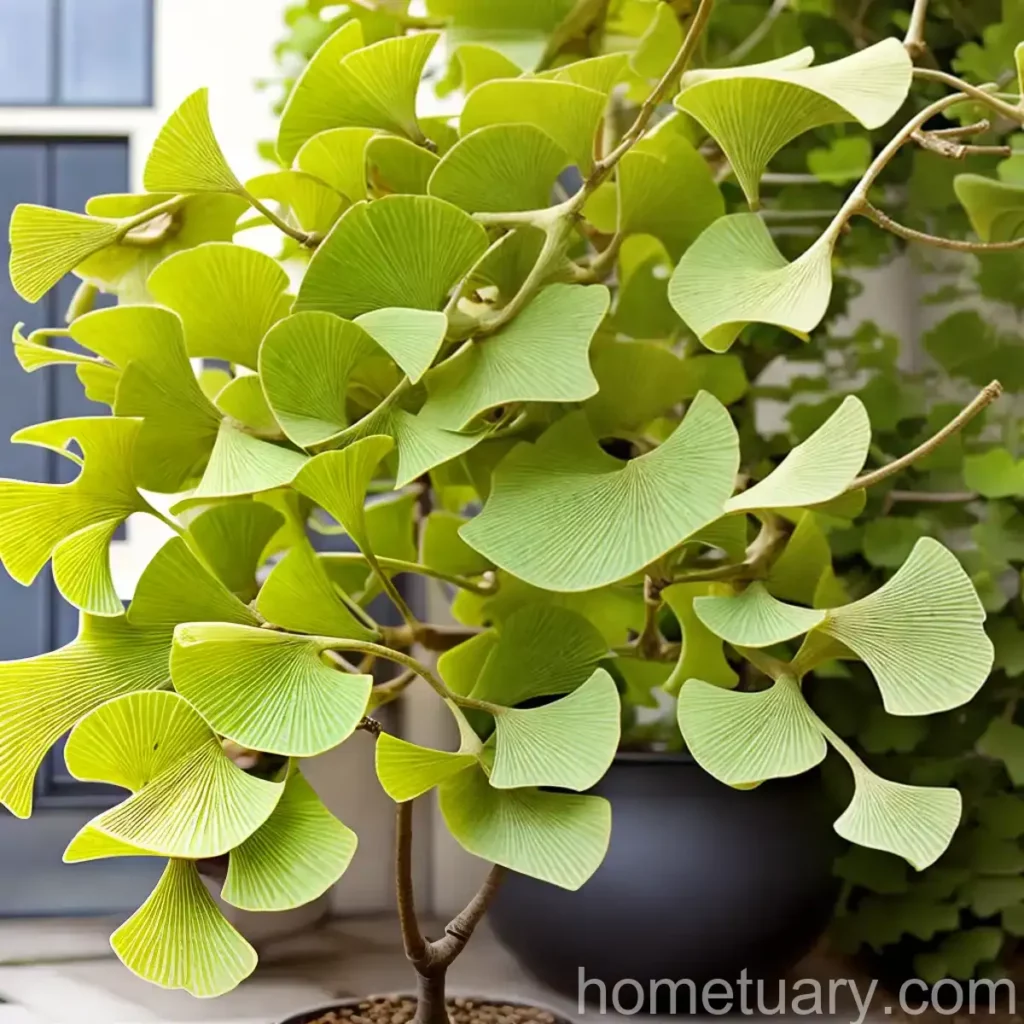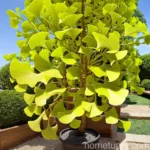Growing the Ginkgo ‘Troll’ Tree: A Comprehensive Guide
The Ginkgo biloba, or maidenhair tree, has been around for millions of years and is often referred to as a “living fossil” due to its resilience and longevity. Among the various cultivars of Ginkgo biloba, the ‘Troll’ variety stands out for its unique characteristics and compact size, making it a popular choice for gardens and urban landscapes. In this comprehensive guide, we will explore the key aspects of caring for the Ginkgo biloba ‘Troll’, including its cultural significance, uses, and essential care guidelines.
What is the Ginkgo ‘Troll’ Tree (Ginkgo biloba ‘Troll’)?
The Ginkgo biloba ‘Troll’ is a dwarf variety that showcases all the unique features of the classic Ginkgo biloba in a more compact form. This slow-growing deciduous tree typically reaches a height of 3-4 feet and forms a broad, conical shape. The ‘Troll’ variety is known for its distinctive fan-shaped leaves that turn a brilliant golden-yellow in the fall, creating a stunning display of color.
Key Takeaways – Ginkgo ‘Troll’ Tree
- Scientific Name: Ginkgo biloba ‘Troll’
- Common Name: Troll maidenhair tree
- Plant Type: Deciduous tree
- Mature Height: 3-4 feet
- Foliage Color: Golden-yellow in the fall
- Growth Rate: Slow
With its compact size and striking foliage, the Ginkgo biloba ‘Troll’ is a versatile and low-maintenance addition to any garden or landscape. In the following sections, we will delve into the cultural significance, uses, and essential care guidelines for this unique and captivating tree.
Culture
Uses
The Ginkgo biloba ‘Troll’ is valued not only for its ornamental beauty but also for its historical and cultural significance. Here are a few key uses of this remarkable tree:
- Ornamental Value: The ‘Troll’ variety serves as an excellent ornamental specimen, adding a touch of elegance and charm to gardens, parks, and urban landscapes.
- Historical Significance: Ginkgo biloba, including the ‘Troll’ cultivar, holds immense cultural and historical significance, often symbolizing longevity, resilience, and hope.
- Wildlife Attraction: The Ginkgo biloba tree, including the ‘Troll’ variety, is known to attract various wildlife, including birds and butterflies, enhancing the ecological diversity of the surroundings.
Water
When it comes to watering the Ginkgo biloba ‘Troll’, it is important to strike a balance to ensure the tree’s health and vigor. Here are key water-related factors to consider:
- Watering Needs: While the Ginkgo biloba ‘Troll’ is relatively drought-tolerant once established, it is crucial to provide regular watering, especially during periods of prolonged drought or high temperatures.
- Soil Moisture: The tree prefers well-drained soil to prevent waterlogging, which can lead to root rot. Regularly check the soil moisture to determine the optimal watering frequency.
Sunlight
The Ginkgo biloba ‘Troll’ thrives in various sunlight conditions, making it adaptable to a range of environments. Consider the following sunlight guidelines:
- Optimal Sun Exposure: The ‘Troll’ variety appreciates full sun to partial shade, allowing it to display its vibrant fall foliage when exposed to ample sunlight.
- Shade Tolerance: While the tree prefers sunlight, it can also tolerate partial shade, making it suitable for planting in diverse garden and landscape settings.
Fertilizer
Proper fertilization plays a vital role in supporting the growth and development of the Ginkgo biloba ‘Troll’. Here are essential fertilizer considerations:
- Soil Nutrients: Choose a balanced, slow-release fertilizer to provide essential nutrients without promoting excessive vegetative growth.
- Fertilizer Application: Apply the fertilizer in early spring before the tree begins active growth, ensuring even distribution around the tree’s root zone.
Soil
The selection of the right soil type and quality is crucial for the Ginkgo biloba ‘Troll’ to thrive and flourish. Consider the following soil-related factors:
- Well-Drained Soil: The ‘Troll’ variety prefers well-drained soil, as it is susceptible to root rot in waterlogged conditions.
- Soil pH: Ginkgo biloba ‘Troll’ thrives in slightly acidic to neutral soil with a pH range between 6.0 and 7.5. Regular soil testing can help monitor and adjust the soil pH as needed.
Pruning
Pruning is an essential aspect of maintaining the health, shape, and structural integrity of the Ginkgo biloba ‘Troll’. Here are key pruning guidelines:
- Pruning Time: Conduct pruning during the dormant season in late winter or early spring to minimize stress on the tree.
- Pruning Objectives: Focus on removing dead, damaged, or crossing branches, as well as shaping the tree to promote a balanced and attractive form.
Propagation
While the Ginkgo biloba ‘Troll’ is primarily propagated through grafting and budding, home gardeners may also explore seed propagation under controlled conditions. Here are key propagation considerations:
- Seed Propagation: Propagating the ‘Troll’ variety from seeds requires stratification to break dormancy and promote germination. Note that seed-grown trees may exhibit variations in growth habits and foliage characteristics.
- Grafting: For consistent genetic characteristics, consider obtaining Ginkgo biloba ‘Troll’ from reputable nurseries offering grafted plants.
Container Popularity
The compact size and ornamental appeal of the Ginkgo biloba ‘Troll’ make it an excellent choice for container gardening. Here are some reasons why it is popular for container cultivation:
- Space Efficiency: The ‘Troll’ variety’s compact size allows for easy placement in containers, making it suitable for patios, balconies, and small urban spaces.
- Versatile Design Element: With its striking foliage and elegant form, the ‘Troll’ variety adds visual interest and sophistication to container gardens, enhancing the overall aesthetic appeal.
Common Diseases
The Ginkgo biloba ‘Troll’ is generally resistant to many common tree diseases. However, it may occasionally encounter certain ailments that can affect its health. Here are some common diseases to watch out for:
Disease Diagnosis
- Leaf Spot: Keep an eye out for leaf spots, which may indicate fungal infections. Provide proper ventilation and avoid overhead watering to mitigate the risk of leaf spot diseases.
Common Pests
While the ‘Troll’ variety of Ginkgo biloba is relatively pest-resistant, it may still face occasional pest infestations. Here are some common pests to monitor:
Botanist’s Tips
As a botanist, I have had the opportunity to observe and study the captivating Ginkgo biloba ‘Troll’ variety in various environments. Here are a few tips based on my experiences and expertise:
- Climate Adaptation: The Ginkgo biloba ‘Troll’ exhibits remarkable adaptability to diverse climatic conditions, making it a resilient and reliable choice for both urban and suburban landscapes.
- Growth Rate: Due to its slow growth habit, the ‘Troll’ variety requires patience and careful monitoring, but its eventual mature form and foliage are well worth the wait.
- Historical Significance: Take the time to appreciate the rich historical and cultural significance of the Ginkgo biloba ‘Troll’ as a symbol of longevity, hope, and endurance.
Fun Facts
- The Ginkgo biloba is considered a living fossil, with a lineage dating back to the time of dinosaurs, making it one of the oldest tree species on Earth.
- Ginkgo biloba leaves are widely used in traditional medicine and have been attributed with various health benefits, including potential cognitive and circulatory support.
Links to External Resources
For further information on the Ginkgo biloba ‘Troll’ tree, including detailed care guidelines and historical insights, consider exploring the following resources:
1. The Morton Arboretum – Ginkgo biloba ‘Troll’
2. Royal Horticultural Society – Ginkgo biloba ‘Troll’ cultivation guide
3. Missouri Botanical Garden – Maidenhair tree (Ginkgo biloba)
In conclusion, the Ginkgo biloba ‘Troll’ stands as a remarkable testament to the enduring beauty and resilience of nature. Whether adorning urban streetscapes or gracing private gardens, this dwarf variety of the ancient Ginkgo biloba species offers a wealth of historical, cultural, and horticultural significance, enriching the lives and landscapes it inhabits. By understanding and embracing the essential care guidelines and unique characteristics of the Ginkgo biloba ‘Troll’, we can continue to appreciate and preserve this extraordinary living fossil for generations to come.















